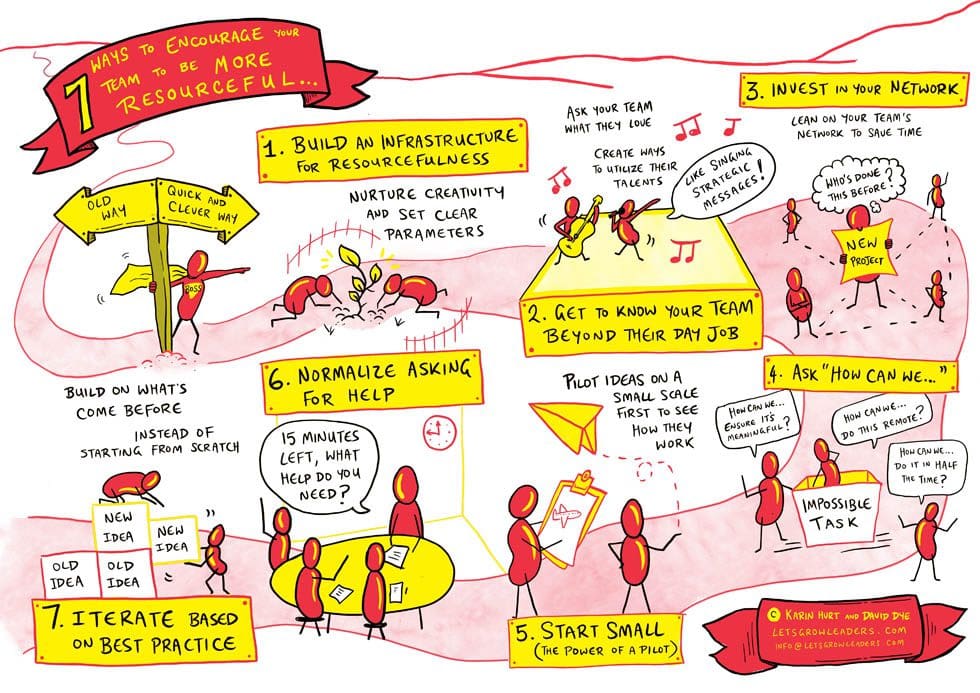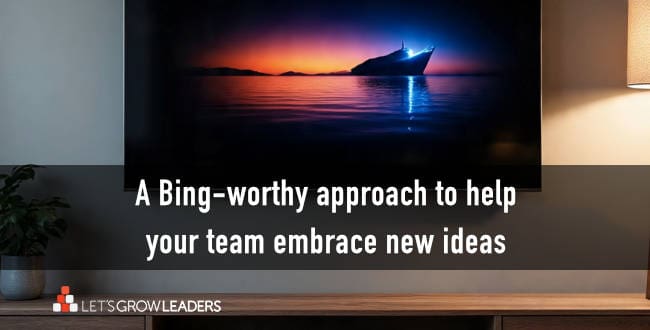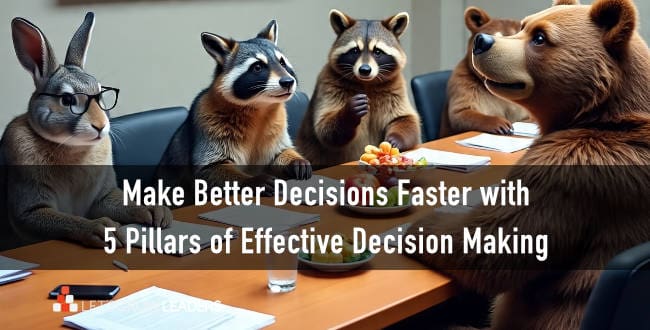7 Ways to Encourage Your Team to Be More Resourceful
What does it mean to be resourceful?
Our favorite definition of resourceful is, “The ability to find quick and clever ways to overcome difficulties.”
Quick and clever. Overcome difficulties.
Who doesn’t need more of that on their team right now?
And yet during times of stress, ambiguity, and change, when you need your team to be THE MOST resourceful, some managers clampdown, insist on the old ways of doing things, and slow their team down.
In our research on innovation and psychological safety, 67% of employees said their manager operates around the notion of “this is the way we’ve always done it.”
It’s tricky to be quick and clever in a scene like that.
Like other human resource competencies, resourcefulness needs to be taught and nurtured, through deliberate focus and training.
7 Ways to Help Your Team Be More Resourceful
So how do you teach and encourage resourcefulness in your leaders and on your team?
- Build an infrastructure for resourcefulness
- Get to know your team (beyond what they bring to their day job.)
- Invest in your network.
- Ask “How can we?”
- Start small (the power of a great pilot.)
- Normalize asking for help.
- Iterate
 1. Build an infrastructure for resourcefulness.
1. Build an infrastructure for resourcefulness.
First, if you want your team to be more resourceful, be sure you don’t sabotage natural creativity and resourcefulness with your infrastructure, rules, and words.
For example, consider a highly competitive culture where people or regions are stack-ranked against one another. They’re not likely to reach out and ask one another for help or share best practices.
Be sure your team knows that their competition is mediocrity, not the guy in the Zoom window next door.
Similarly, if even small decisions require multiple layers of approval, your team will lose energy to try new things. Or if people think they’ll get in trouble for their creativity, they won’t risk it.
A good place to start is to set clear parameters for decisions so employees understand where they’re truly empowered to try new approaches and get scrappy—and where you’d rather they not.
Of course, sometimes an abundance of resources can actually sabotage your ability to grow resourceful leaders.
The most resourceful leaders I know learned how to do more with less because they had to. Be sure you’re giving your team some opportunities to get resourceful and scrappy.
2. Get to know your team (beyond what they bring to their day job.)
Chances are you’ve got people on your team who have some fantastic skills you didn’t hire them for.
One of our favorite examples of this was when Karin worked with thirty BPOs (outsource contact centers) in her role leading the Strategic Partnership Channel at Verizon.
These companies were all running on tight margins and focused on building high-engagement cultures. The internal Verizon centers always held fancy kick-off meetings and the outsourced centers wanted to hold one too. But they just didn’t have the same budget.
So, they tapped into the talent on their teams and held kick-offs in the parking lot.
Service reps painted props or sewed some curtains into a make-shift backdrop. Employees formed ad-hoc rock bands. Others danced or made up lyrics to songs that reflected their most important strategic priorities. There were baggies with candy reinforcing key messages. Managers brought in their own grills to cook the burgers.
No fancy budget. Lots of fun.
And guess what?
Strategic messages got through just as well (if not better) than if we had rented a fancy room at a gigantic sound system and tee-shirt blasters.
This works for other aspects of the business too. Ask your team what they love to do most and look for creative ways to use their gifts.
The other day, one CEO we work with was using our developmental discussion planner to have a career conversation with a senior-level direct report (who we’ll call Kim). Kim began sharing experiences from a role at a previous company and why they had been so meaningful to her. Not too far into the conversation, they both realized they could call off the external search for a new role, and give Kim the opportunity to try it.
3. Invest in your network.
Encourage your team to invest in a network of trusted strategic relationships inside and outside your company. Having a diverse group of people you trust to tell you the truth and challenge you can save you a lot of time and wasted effort.
Before starting a new initiative, ask your team to reach out to their network and learn from their best practices and mistakes. “Who is doing this well? And what can we learn from them to save us some time?”
Of course, the best way to build a network of useful resources is to be a resource to them.
4. Ask “How can we?”
When it comes to resourcefulness, three of the most powerful words you can teach your team are “How can we?”
- “I know we don’t have the time we usually do to pull this off, but HOW CAN WE accomplish this in half the time?”
- “We don’t have the budget we did last year, but HOW CAN WE ensure this customer event is just as meaningful?”
- “I know everyone’s working from home, but HOW CAN WE run this strategic planning meeting as well as if we were in person?”
One time David led a team that brought together 4,500 people from across the city in a matter of days to take advantage of a generous opportunity. When confronted with the opportunity, it seemed impossible. A few “How can we?” conversations later, the team figured out how to get it done. “How can we?” is a powerful creative force.
5. Start small (the power of a great pilot.)
Even if you’re in a big company with lots of resources, you don’t have to try all new ideas at scale. Teach your team the art of intrapreneurship by piloting ideas on a small scale first to see how they work.
6. Normalize asking for help.
It’s easy for everyone to assume that everyone else is so busy, they don’t have time to help. And yet, sometimes just a little help can go a long way. Resourceful teams create space in their meetings for people to ask for the help they need and to celebrate the help they’ve received.
7. Iterate.
Before you build something new from scratch, look at what’s come before. Sure, you want that project to be just perfect for that new client, but before starting with a blank sheet of paper, take time to identify best practices as building blocks to iterate from.
Talk about It
Most importantly, if you want your team to be resourceful, have deliberate conversations about resourcefulness.
- “What’s the most efficient way we can pull this off?”
- “What other resources might we be able to tap into that we haven’t considered?”
- “Who can we learn from before we begin this process?”







0 Comments